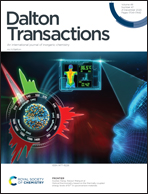Probing the tautomerization of disilenes and disilabenzenes with their isomeric silylenes: significant substituent, aromaticity and base effects†
Abstract
Disilene has attracted considerable interest due to the trans-bending geometry which is significantly different from the planar alkene. However, the equilibrium between disilene and isomeric silylsilylene has not been fully understood. Here, we report a density functional theory (DFT) study on this equilibrium. Calculations reveal significant effects of substituent, aromaticity and base. Specifically, the parent disilene is thermodynamically more stable than the isomeric silylene. When the methoxy substituent is introduced, the corresponding silylene becomes thermodynamically more stable, which could be rationalized by the Bent's rule. Interestingly, disilabenzene becomes thermodynamically more stable than the isomeric silylene when the concept of aromaticity is taken into account. Finally, once the base is introduced, the silylene could become thermodynamically more stable than the isomeric disilabenzene. The kinetic effect of the tautomerization with several typical substituents (F, Me and OMe) has also been investigated. Some species with a bridged form have been found to have a higher thermodynamic stability over the nonbridged ones. All these findings could be particularly useful to develop the chemistry of disilenes and silylenes.



 Please wait while we load your content...
Please wait while we load your content...